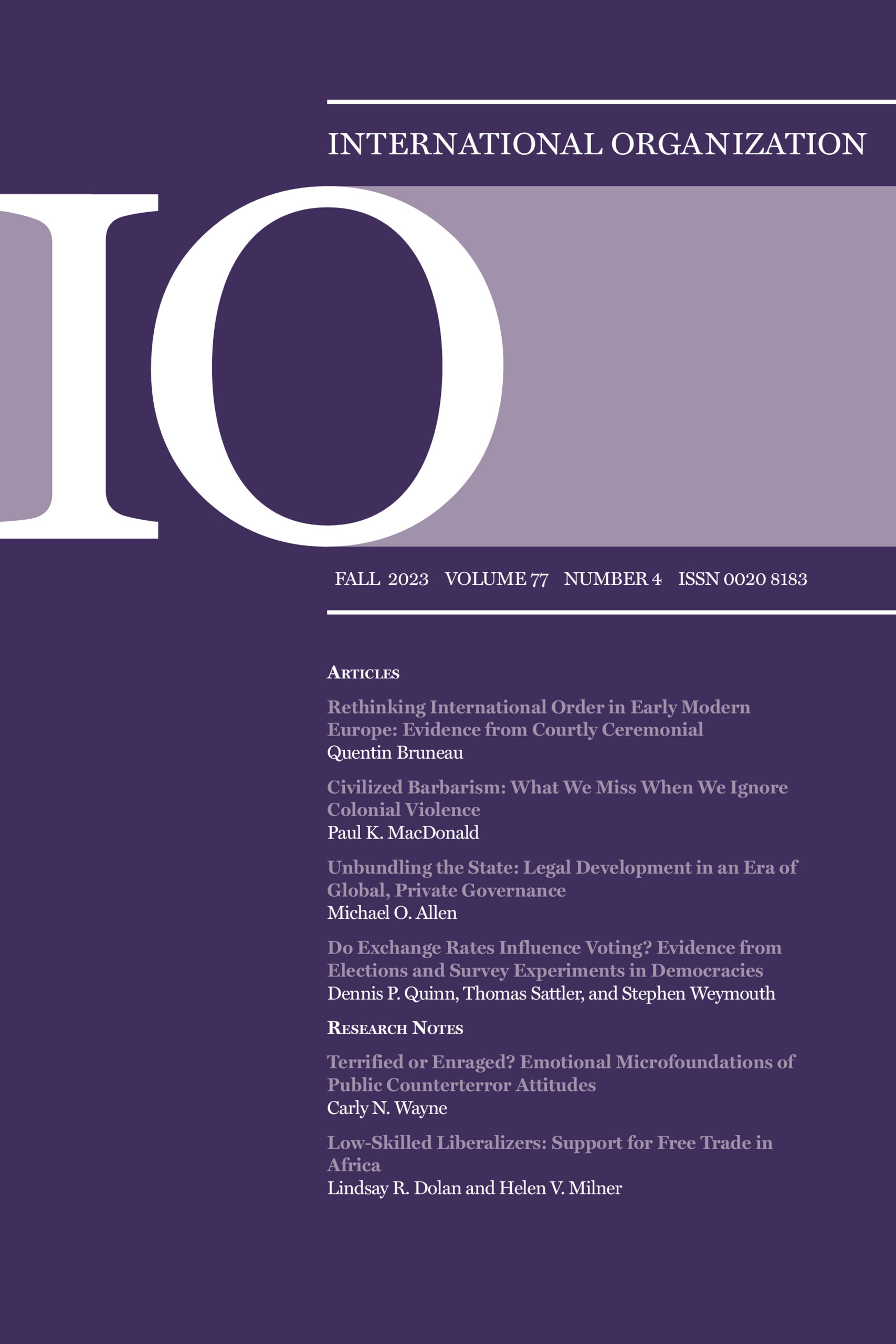走私和边境执法
IF 4.5
1区 社会学
Q1 INTERNATIONAL RELATIONS
引用次数: 2
摘要
摘要本文分析了边境执法打击走私的有效性。我们认为,围墙、围栏、巡逻和其他保护漏洞百出的边境的努力可以减少走私,但前提是走私者和官方边境口岸的国家特工之间没有勾结。当这种腐败发生时,边境执法只会转移走私流量,而不会减少其总体数量。我们还确定了腐败发生的条件,并将边境执法定性为一种分类机制,允许高技能走私者伪造替代过境路线,同时威慑低技能走私者或驱使他们贿赂当地边境特工。结合东南亚鸦片走私的正式模型和档案案例研究,我们证明边境执法对走私路线和数量有条件影响,这取决于走私者和边境特工之间互动的性质。本文通过关注走私的技术和组织方面,将刑事治理学术纳入国际关系研究,并为更广泛地讨论边境执法和边境政治的影响做出了贡献。本文章由计算机程序翻译,如有差异,请以英文原文为准。
Smuggling and Border Enforcement
Abstract This article analyzes the efficacy of border enforcement against smuggling. We argue that walls, fences, patrols, and other efforts to secure porous borders can reduce smuggling, but only in the absence of collusion between smugglers and state agents at official border crossings. When such corruption occurs, border enforcement merely diverts smuggling flows without reducing their overall volume. We also identify the conditions under which corruption occurs and characterize border enforcement as a sorting mechanism that allows high-skilled smugglers to forge alternative border-crossing routes while deterring low-skilled smugglers or driving them to bribe local border agents. Combining a formal model and an archival case study of opium smuggling in Southeast Asia, we demonstrate that border enforcement has conditional effects on the routes and volumes of smuggling, depending on the nature of interactions between smugglers and border agents. By drawing attention to the technological and organizational aspects of smuggling, this article brings scholarship on criminal governance into the study of international relations, and contributes to debates on the effects of border enforcement and border politics more generally.
求助全文
通过发布文献求助,成功后即可免费获取论文全文。
去求助
来源期刊

International Organization
Multiple-
CiteScore
14.50
自引率
1.30%
发文量
25
期刊介绍:
International Organization (IO) is a prominent peer-reviewed journal that comprehensively covers the field of international affairs. Its subject areas encompass foreign policies, international relations, political economy, security policies, environmental disputes, regional integration, alliance patterns, conflict resolution, economic development, and international capital movements. Continuously ranked among the top journals in the field, IO does not publish book reviews but instead features high-quality review essays that survey new developments, synthesize important ideas, and address key issues for future scholarship.
 求助内容:
求助内容: 应助结果提醒方式:
应助结果提醒方式:


